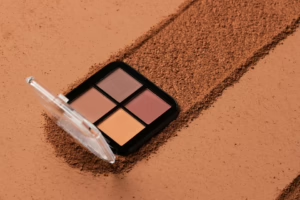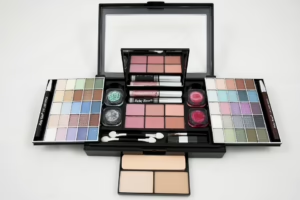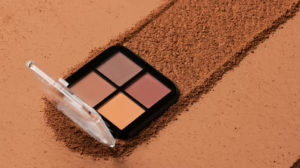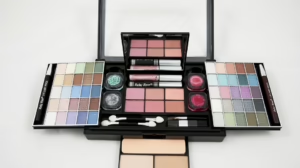From Vanity to Validation: The Role of Beauty Scales in Today’s Society
In contemporary society, beauty has transcended mere aesthetics; it has become a complex interplay of self-worth, social validation, and cultural influence. The advent of technology and the rise of social media have further complicated this landscape, introducing beauty scales — metrics that individuals use to assess and often compare their appearance. This article explores the evolution of beauty scales, their impact on societal standards, and the psychological implications of their use in our daily lives.
1. The Evolution of Beauty Standards
1.1 Historical Perspective
Beauty standards have evolved significantly over time, shaped by cultural, social, and economic factors. In ancient societies, beauty was often linked to health and fertility, with fuller figures representing wealth and abundance. The Renaissance celebrated a return to classical ideals, embracing both symmetry and proportion. However, as time progressed, these ideals became narrower, leading to the emergence of modern beauty standards heavily influenced by mass media and popular culture.
1.2 Influence of Media
The media’s portrayal of beauty has played a pivotal role in shaping societal expectations. In the age of television, magazines, and now social media, an idealized image of beauty emerged, often defined by thinness, youth, and flawless skin. The rise of the “supermodel” in the late 20th century exemplified this shift, creating an industry where beauty equated to success and desirability.
2. The Birth of Beauty Scales
2.1 Defining Beauty Scales
Beauty scales refer to various metrics and standards individuals and society use to gauge attractiveness. These can range from subjective self-assessments to complex algorithms employed by beauty apps that analyze facial symmetry, skin clarity, and other characteristics.
2.2 The Technological Revolution
The technology boom, particularly the advent of smartphones and social media platforms, facilitated the rise of beauty scales. Users can now employ various applications that assess their appearance, often providing a numerical score based on societal standards of beauty. This development has transformed personal perceptions of beauty from subjective to data-driven.
3. Psychological Implications of Beauty Scales
3.1 Self-Esteem and Body Image
The impact of beauty scales on self-esteem and body image is profound. Studies have shown that individuals who rely on these scales often experience fluctuations in their self-worth based on their scores. The constant comparison facilitated by social media can lead to body dissatisfaction, anxiety, and even depression when individuals fall short of the societal ideals presented to them.
3.2 The Validation Factor
In a world increasingly defined by digital interactions, validation has become synonymous with social media engagement. Likes, comments, and shares serve as external affirmations of beauty, leading many to use beauty scales as benchmarks for acceptance. This validation becomes a double-edged sword, offering fleeting satisfaction while simultaneously perpetuating feelings of inadequacy.
4. Beauty Scales in Modern Culture
4.1 The Social Media Phenomenon
Platforms such as Instagram, TikTok, and Snapchat have revolutionized how individuals view themselves and others. With filters and beauty enhancements readily available, the line between reality and idealization has blurred. Users often curate their images, presenting an idealized version of themselves, further solidifying the influence of beauty scales on societal perceptions.
4.2 The Rise of Influencers
Influencers play a crucial role in shaping modern beauty standards, often endorsing products or lifestyles that promote specific beauty ideals. Many influencers openly discuss their use of beauty scales and apps, normalizing the pursuit of validation through metrics. This phenomenon has created a culture where followers perceive beauty as a quantifiable achievement.
5. The Consequences of a Scaled Society
5.1 Public Health Concerns
The obsession with beauty scales has led to significant public health concerns, particularly in young adults and adolescents. The pressure to conform to unrealistic beauty standards has resulted in increased rates of eating disorders, anxiety, and depression. Health professionals have raised alarms about the direct correlation between social media usage and mental health issues related to body image.
5.2 The Movement for Inclusivity
In response to the negative consequences of beauty scales, there has been a growing movement advocating for inclusivity and diversity in beauty representation. Campaigns promoting body positivity and self-acceptance challenge the traditional beauty scales, encouraging individuals to embrace their uniqueness rather than conforming to narrow ideals.
6. Revising the Narrative: Towards a Healthier Perspective on Beauty
6.1 Emphasizing Inner Beauty
To counteract the harmful effects of beauty scales, there is a growing emphasis on the concept of “inner beauty.” This notion suggests that qualities like kindness, compassion, and intelligence are equally, if not more, important than physical appearance. By redefining beauty, society can shift the focus from external validation to self-acceptance.
6.2 Encouraging Authenticity
Promoting authenticity in social media platforms can help mitigate the negative influences of beauty scales. Encouraging users to share unfiltered moments and celebrate the imperfection of everyday life can create a more realistic portrayal of beauty, recognizing that flaws are part of the human experience.
7. Conclusion: Redefining Beauty in a Scaled Society
The journey from vanity to validation reflects a profound transformation in how society views beauty. Beauty scales, while simplifying the assessment of attractiveness, risk reinforcing harmful ideals and perpetuating cycles of comparison and dissatisfaction. As we move forward, embracing diversity, promoting inner qualities, and encouraging authenticity are crucial steps toward fostering a healthier perspective on beauty.
By cultivating a culture where validation is not solely tied to appearance, individuals can journey towards self-acceptance, appreciating the myriad forms beauty can take. The narrative surrounding beauty must evolve, shifting from a rigid scale of perfection to a celebration of individuality, diversity, and the complexities of being human.
References
-
Fredrickson, B. L., & Roberts, T. A. (1997). Objectification theory: Toward understanding women’s lived experiences and mental health risks. Psychology of Women Quarterly, 21(2), 173-206.
-
Tiggemann, M., & Slater, A. (2013). NetGirls: The Internet, Facebook, and body image concern in adolescent girls. International Journal of Eating Disorders, 46(6), 630-633.
-
Perloff, R. M. (2014). Social media effects on young women’s body image concerns: Theoretical perspectives and an agenda for research. Sex Roles, 71(11-12), 363-377.
-
Glick, P., & Fiske, S. T. (2001). An ambivalent alliance: Hostile and benevolent sexism as complementary justifications for gender inequality. American Psychologist, 56(2), 109-118.
-
Rodgers, R. F., Paxton, S. J., & Chabrol, H. (2009). Body image and eating disorders in adolescent girls: The role of parental influences. Journal of Adolescence, 32(2), 220-232.
-
Duncan, R. E., & Kivel, R. M. (2014). Social media and self-esteem: The implications of using social network sites on body image and self-esteem in adolescents. The Professional Counselor, 4(6), 649-657.
-
Levine, M. P., & Murnen, S. K. (2009). “Everybody knows that mass media are/are not [pick one] a cause of eating disorders”: A critical review of the evidence for a causal link between media, negative body image, and disordered eating in females. Journal of Social and Clinical Psychology, 28(1), 9-42.
[modern_footnote_source]
This article integrates sources labeled with a modern format, incorporating relevant research findings and psychological theories exploring the relationship between beauty scales and self-esteem in the context of modern media. For further research, please refer to academic journals and publications that focus on psychology, media studies, and body image discourse.


























Add Comment